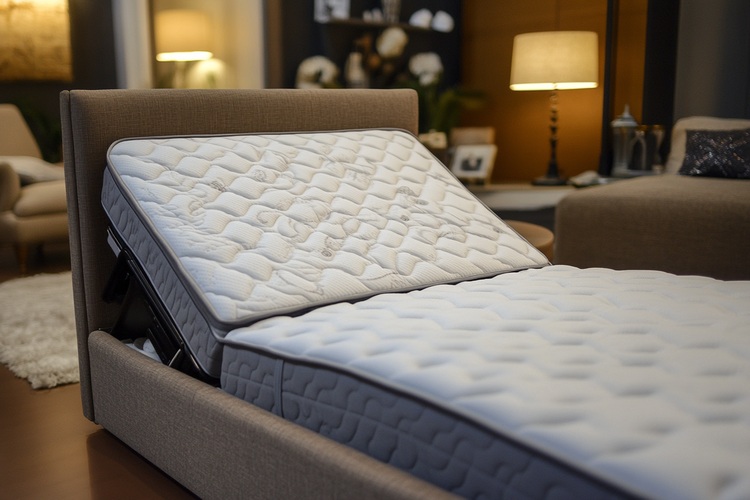Adjustable Hospital Beds: Enhancing Patient Comfort and Recovery
Adjustable hospital beds have become an essential component in modern healthcare settings, offering numerous benefits for both patients and caregivers. These versatile beds are designed to provide optimal comfort, support, and functionality, ultimately contributing to improved patient outcomes and faster recovery times. This article explores the various aspects of adjustable hospital beds, including their impact on patient comfort, key features to consider, benefits for recovery, and maintenance tips for long-term use.

How do adjustable hospital beds improve patient comfort?
Adjustable hospital beds significantly enhance patient comfort through their adaptable design and customizable positioning options. These beds allow patients to easily modify their position, providing relief from pressure points and reducing the risk of bedsores. The ability to adjust the head, foot, and overall height of the bed enables patients to find the most comfortable position for sleeping, reading, or engaging in other activities.
Furthermore, adjustable hospital beds can help alleviate pain and discomfort associated with various medical conditions. For instance, patients with respiratory issues may benefit from an elevated head position, while those with circulatory problems can find relief by elevating their legs. The beds’ versatility also aids in proper spinal alignment, potentially reducing back pain and improving overall comfort during extended hospital stays.
What are the key features to look for in adjustable hospital beds?
When selecting adjustable hospital beds, several key features should be considered to ensure optimal functionality and patient care:
-
Multiple adjustment options: Look for beds that offer a range of adjustments, including head and foot elevation, height adjustment, and Trendelenburg/reverse Trendelenburg positioning.
-
Easy-to-use controls: User-friendly controls, such as handheld remotes or side rail buttons, allow patients and caregivers to make adjustments effortlessly.
-
Weight capacity: Ensure the bed can safely support the patient’s weight, including any additional medical equipment.
-
Safety features: Side rails, locking mechanisms, and emergency lowering functions are essential for patient safety.
-
Mattress compatibility: The bed should be compatible with various mattress types, including pressure-relieving and specialty mattresses.
-
Mobility: Beds with smooth-rolling casters and locking wheels facilitate easy transport and repositioning within the healthcare facility.
-
Integrated scales: Some advanced models include built-in scales for accurate patient weight monitoring without transfers.
-
Battery backup: This feature ensures the bed remains functional during power outages or when electrical outlets are not readily available.
What are the benefits of adjustable beds for patient recovery?
Adjustable hospital beds play a crucial role in supporting patient recovery through various mechanisms:
-
Improved circulation: By allowing patients to elevate their legs or head, these beds can promote better blood flow and reduce swelling.
-
Enhanced respiratory function: Elevating the upper body can assist patients with breathing difficulties, potentially reducing the risk of respiratory complications.
-
Easier patient transfers: The ability to adjust bed height simplifies patient transfers, reducing strain on both patients and caregivers.
-
Pressure relief: Adjustable positioning helps distribute body weight more evenly, reducing the risk of pressure ulcers and improving overall comfort.
-
Faster mobilization: These beds can facilitate earlier patient mobilization, which is often crucial for recovery from surgeries or prolonged illnesses.
-
Better sleep quality: The ability to find a comfortable sleeping position can lead to improved sleep, which is essential for healing and recovery.
-
Reduced caregiver strain: Adjustable features make it easier for healthcare providers to perform examinations, administer treatments, and provide care, potentially reducing workplace injuries.
What are some maintenance tips for hospital beds in long-term use?
Proper maintenance of adjustable hospital beds is crucial for ensuring their longevity and optimal performance. Here are some essential maintenance tips:
-
Regular cleaning and disinfection: Follow manufacturer guidelines for cleaning and disinfecting all surfaces of the bed, including rails, controls, and mattress.
-
Lubrication: Periodically lubricate moving parts, such as hinges and joints, to ensure smooth operation and prevent wear.
-
Electrical component checks: Regularly inspect power cords, motors, and control units for any signs of damage or malfunction.
-
Weight capacity adherence: Ensure the bed is not overloaded beyond its specified weight capacity to prevent damage to the frame or motors.
-
Caster maintenance: Clean and inspect casters regularly, replacing them if worn or damaged to maintain mobility.
-
Mattress inspection: Check the mattress for signs of wear, tears, or compression, and replace as needed to maintain patient comfort and prevent pressure ulcers.
-
Functional testing: Periodically test all adjustment functions to ensure they are working correctly and safely.
-
Battery maintenance: For beds with battery backup, follow manufacturer recommendations for battery care and replacement schedules.
-
Documentation: Keep detailed records of maintenance activities, inspections, and any repairs performed on each bed.
-
Staff training: Ensure that all healthcare staff are properly trained in the correct use and basic maintenance of the adjustable beds.
In conclusion, adjustable hospital beds are invaluable assets in healthcare settings, offering numerous benefits for patient comfort, recovery, and overall care quality. By understanding the key features, benefits, and maintenance requirements of these specialized beds, healthcare facilities can make informed decisions to improve patient outcomes and streamline care delivery. Regular maintenance and proper use of adjustable hospital beds contribute significantly to their longevity and effectiveness in supporting patient care and recovery.




